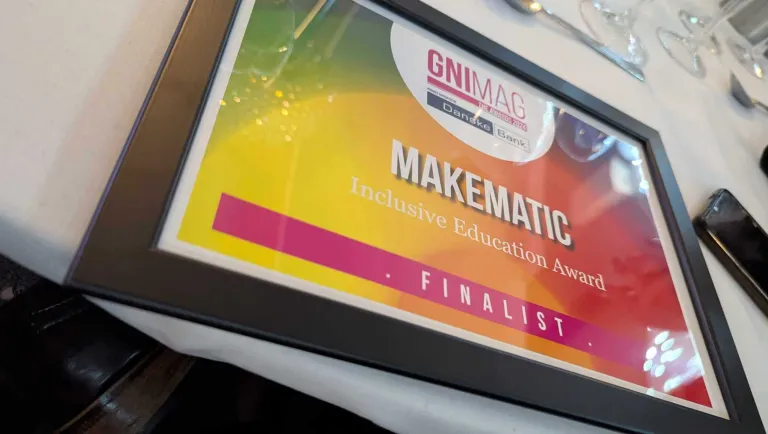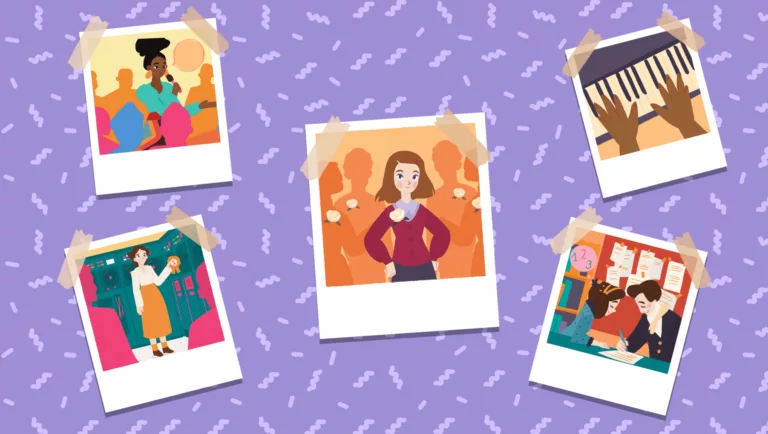
Case Study: Integrating the SDGs into Curriculum
What does it take to start integrating the Sustainable Development Goals into your already crowded curriculum? Read this case study to find out how one New Jersey teacher took the challenge.
Teach SDG Ambassador and New Jersey Technology and STEAM teacher, Ronald Nober, has been using the SDGs to underpin classroom teaching for the last couple of years. How did it start? What were the challenges he faced? And where is he taking this next?
Integrating the SDGs into Teaching and Learning
After watching Dr. Jennifer Williams gave an inspirational session at ReWire2 on the Sustainable Development Goals, technology, and social good, Nober was motivated to see how he could integrate these elements into the classes he was teaching. In fact, it was listening to Dr. Williams speak that changed how he wanted to teach.
Fast forward to January 2020. Nober's first step at integrating the SDGs into his classroom teaching was with Indiana teacher, Spencer Sharp. How did these two educators meet? Via Twitter. Sharp saw a tweet of Nober’s about a shoe design project and commented that the project looked like fun. Later when Nober decided to change the project to incorporate the SDGs, he reached out to Sharp to see if he would like to collaborate. And the rest as they say is history.
Shoes for a Cause
https://www.youtube.com/watch?v=cJhX0FrDcQEShoes for a Cause is a project where students use recycled materials to design a shoe that promotes an SDG that they are passionate about. Once the shoes are created, they are auctioned off. The money that is raised is given to a charity of their choice. Three charities were chosen for this project they were:
- Project Kakuma
- Uniforms for students in Nairobi with Dr. Jennifer Williams & Loise Gichuhi
- Innovation Lab Schools
Because Nober and Sharp were hesitant to take money post auction, winning bids made the donation to the charity themselves, and emailed their receipt in. Once the receipt was received, the shoes were shipped off.
For the first project, $500 was raised. Students loved the project, especially when the bids came in. Seeing that something they had made would ultimately help others, motivated and engaged the,
One pair of slides that were made out of cardboard and foam was auctioned for over $200. Nober still receives emails from the woman who bought the shoes to tell him how much she loves wearing them!!
That Was Just the Beginning
That project lit a spark inside Nober. Following the project's completion, he presented at the SDG conference at ISTE in 2020, and in 2021 became Teach SDG Ambassador.
And the projects kept on coming. Check out three of the projects that Nober has since developed.
The Plastics Problem
The aim of the project is for students to educate others about plastics and animals in the ocean. They also need to devise solutions to solve some of the challenges we have with plastics in our oceans today.
Students are divided into the following teams:
- Website design team
- Social media team
- Video production team
- Education team
And each team is tasked with creating educational assets. Here are some of the things each team does.
The:
- Education team creates a K-3 picture book on The Plastics Problem. A past project was launched on Earth Day, check out their website here.
- Social media team create hashtags and graphics on Canva.
- Video team creates PSA announcements, with the aim of educating the global community about the issue.
Design for Change Project
Using resources from the Design for Change website, Nober’s students create 6-word stories to teach others about global issues. They also create graphics for social media on Canva with their stories so they can educate and share with others. This project gives students the opportunity to be creative and autonomous, which is motivating.
How can social media promote social good?
In this 6th-grade digital leadership, project students explore how social media can promote social good. For this project, Nober works with educator Julia Fliss in Colorado and Lisa Kapp in New York, to initially explore clips from the film and website Girl Rising.
To draw attention to what they learned students create inspiring and educational memes which are on a Padlet. Students post their work and comment on each other’s posts. This project is more impactful because the students are producing work to be shared and commented on, outside of their school. It makes the task not just an assignment but something authentic.
Top Tips for Starting Out
Throw yourself in and give it a go!
Nober was up for the challenge and just threw himself in. At first, he looked at social media for inspiration but then saw what others were doing and felt like a failure. Why? Because he felt he wasn’t doing anything near as good as what others were doing. To move forward he decided he needed to move beyond that, and be kind to himself and focus on one project at a time.
Start small - don’t do too much!!
Start with just one class and one project only! Build that project out, learn from it and take the lessons learned to do something else. The other thing Nober did is start connecting with other educators who were further along the journey, seeing what they were doing, and taking little pieces to use with his classes
Use good resources
"I can’t imagine any student listening to one of the podcasts from Design for Change and not having an opinion or not caring. These stories tug at your emotions because they're real!"
Ronald Nober
Here are three resources that Nober suggests you should check out.
Dr. Jennifer Williams book - Teach Boldly - Using Edtech for Social Good.
Final Pearls of Wisdom
In Nober's own words: "Think back to what it was when you were their age if you can remember of course. You probably weren’t as globally aware as they are and were probably not as conscious of global issues either. This is a generation who want more of a voice, who care about and are worried about the future of the world they live in.
Sometimes the overwhelming part of education is how do I get the students interested? The truth is, this stuff is interesting to them because it’s relevant. It’s their world. So that really shouldn’t be a concern that educators have. Just give it a go!!"
Keen to Get Started?
Connect with Ronald Nober on Twitter @nober_techclass
SGD primary/elementary and middle school/secondary videos here.
Educator SDG professional development videos here.
Participate in the student-focussed and driven #17DaysToLearn Challenge with your students. You can access the challenges here.
Get inspired. Here are three case studies to help you teach the SDGs in your classes.
Teachers Across Borders Building Educator Capacity in Cambodia
Developing Global Mindedness With The SDGs


